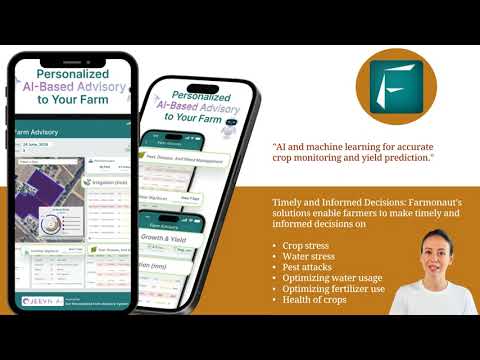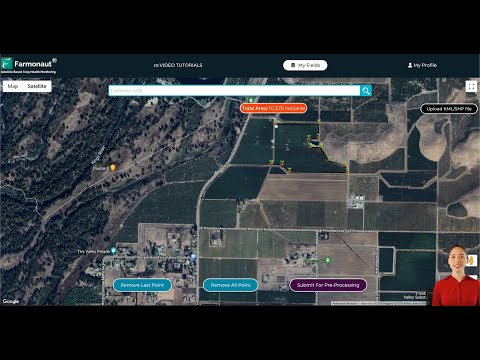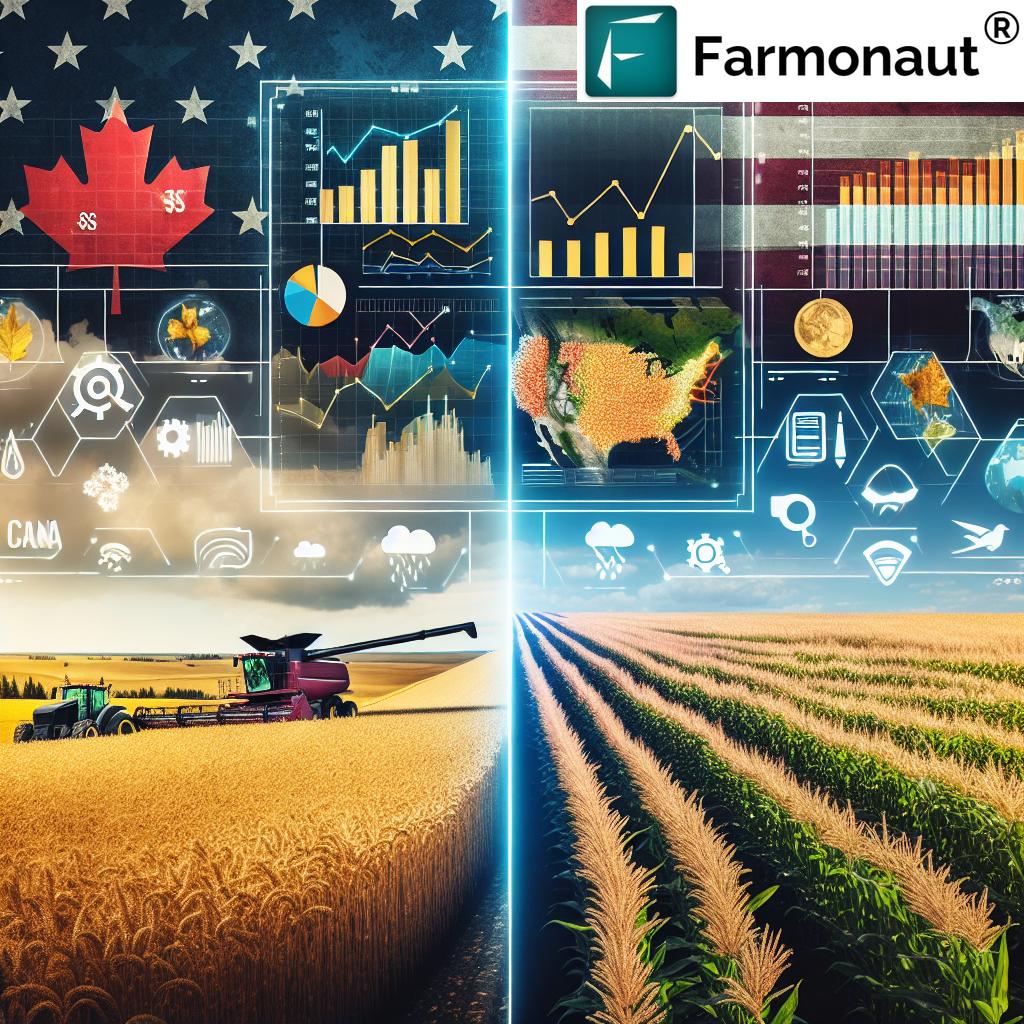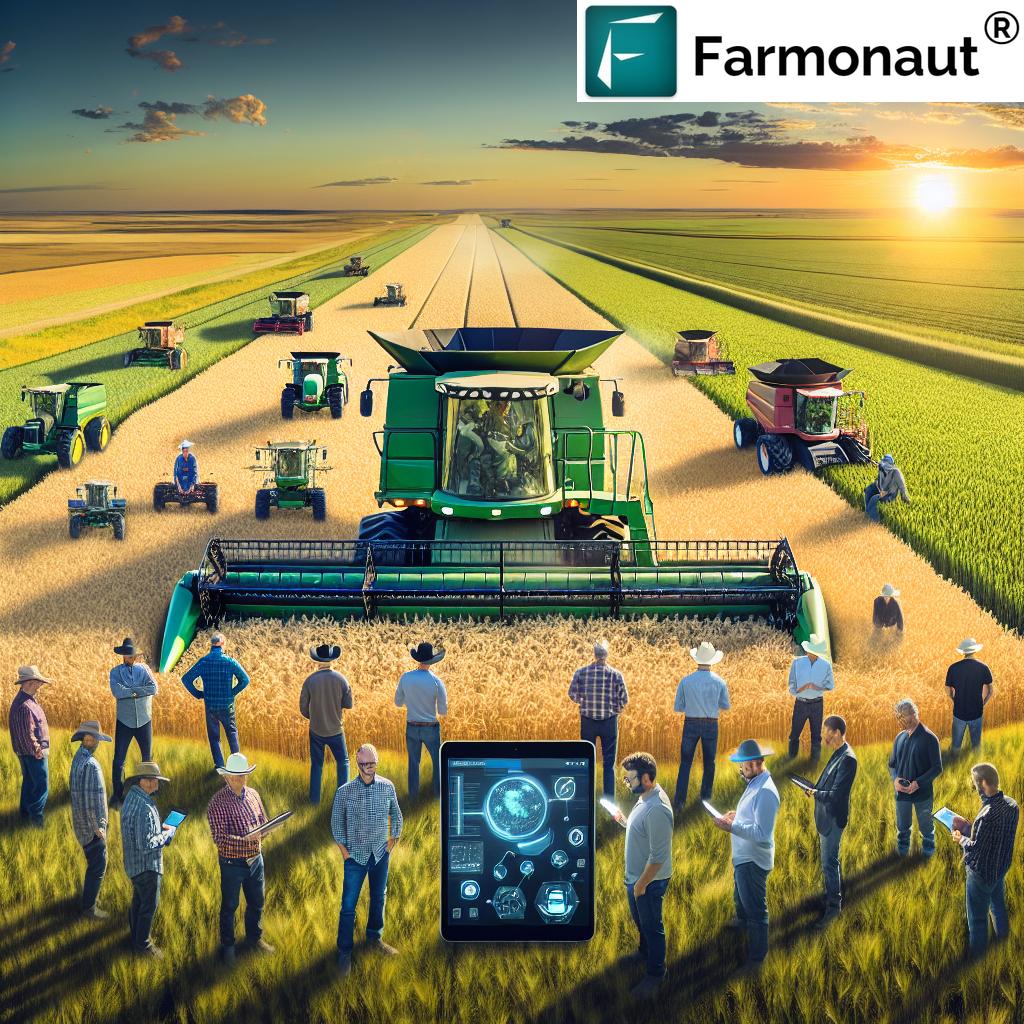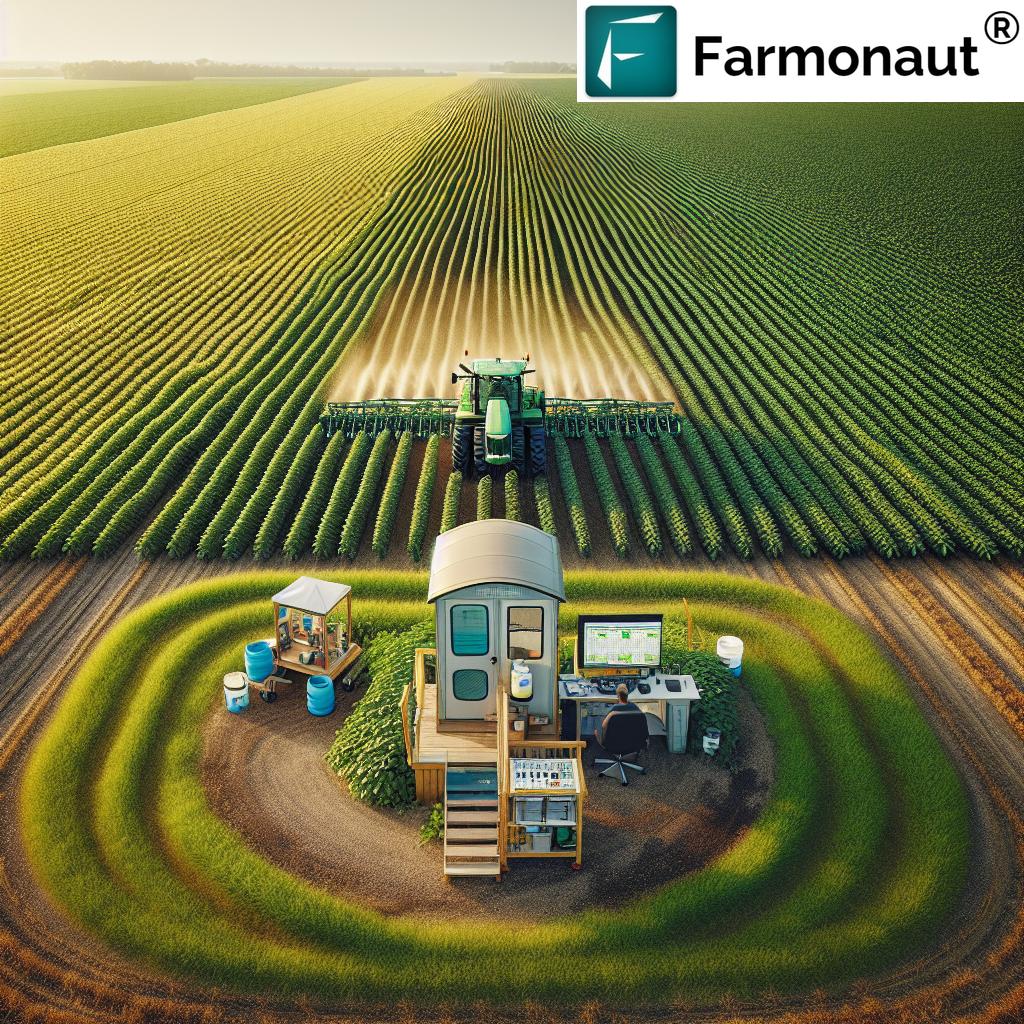Farmonaut Insights: Canadian and US Cattle Market Trends 2024 – Navigating Production Shifts and Price Forecasts
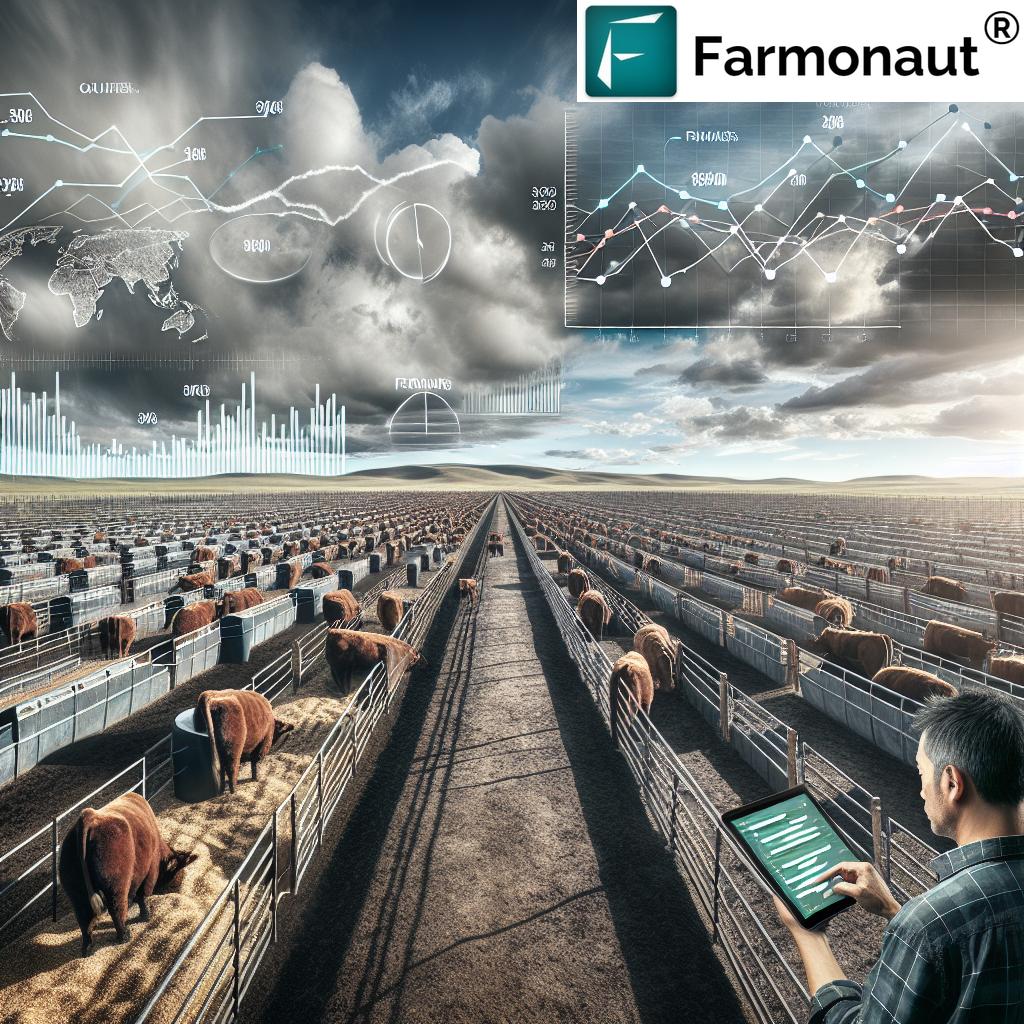
Welcome to our comprehensive analysis of the Canadian and US cattle market trends for 2024. As we navigate the complex landscape of livestock production forecasts and price shifts, we’ll explore how precision agriculture technologies, such as those offered by Farmonaut, are providing valuable insights into agricultural market dynamics. Join us as we delve into the intricate world of cattle inventory, heifer retention strategies, and the factors influencing market stability in North America.
“US cattle inventory declined 2% in 2023, with beef cow numbers dropping 3.5% to 28.9 million head.”
The Current State of Cattle Markets in Canada and the US
As we enter 2024, the cattle markets in both Canada and the United States are experiencing significant shifts. These changes are driven by various factors, including weather patterns, feed costs, and global demand for beef. Let’s break down the key elements shaping the industry:
- Declining Inventory: Both countries have seen a reduction in cattle numbers, with the US experiencing a more pronounced decline.
- Price Volatility: Feeder cattle prices have shown increased volatility, reflecting uncertainties in the market.
- Export Dynamics: Canadian beef exports have reached record levels, while US exports face challenges due to reduced production.
- Weather Impacts: Extreme weather events have affected pasture conditions and feed availability, influencing production decisions.
To better understand these trends, let’s take a closer look at the comparative data for Canada and the US:
| Country | Estimated Cattle Inventory (millions) | Projected Feeder Cattle Prices ($/cwt) | Heifer Retention Rate (%) | Expected Export Volume (million lbs) | Weather Impact on Production (scale 1-5) |
|---|---|---|---|---|---|
| Canada | 11.5 | 220-240 | 18 | 1,150 | 3 |
| United States | 87.2 | 180-200 | 15 | 3,000 | 4 |
| Year-over-Year Change | -2.5% | +5% | -2% | -1.5% | +1 |
This comparative analysis highlights the nuanced differences between the Canadian and US cattle markets. While both countries face challenges, the scale and impact vary, influencing market strategies and production decisions.
Livestock Production Forecast: Key Drivers and Challenges
The livestock production forecast for 2024 is shaped by several critical factors that producers and market analysts must consider. Let’s explore these drivers and the challenges they present:
- Feed Costs: With fluctuating grain prices, feed costs remain a significant concern for cattle producers.
- Drought Conditions: Persistent drought in key cattle-producing regions has led to reduced pasture availability and higher feed costs.
- Consumer Demand: Shifting consumer preferences and economic factors influence beef demand and pricing.
- Global Trade: International trade agreements and export opportunities play a crucial role in market stability.
To navigate these challenges, many producers are turning to advanced technologies for support. Farmonaut’s precision agriculture platform offers valuable tools for crop yield estimation and sustainable farming practices, which can indirectly benefit cattle producers by optimizing feed production.
Feeder Cattle Prices: Trends and Projections
Feeder cattle prices are a critical indicator of market health and future production trends. As we move through 2024, several factors are influencing price movements:
- Supply Constraints: Lower cattle inventory is putting upward pressure on prices.
- Seasonal Patterns: Traditional seasonal price fluctuations are being amplified by current market conditions.
- Futures Market: CME feeder cattle futures are providing insights into market expectations.
- Regional Variations: Prices vary significantly across different regions, reflecting local supply and demand dynamics.
To illustrate these trends, let’s look at some recent price data:
- In early 2024, feeder cattle prices in Alberta ranged from $220 to $240 per cwt for 850-pound steers.
- US feeder cattle futures for March 2024 were trading around $180 to $200 per cwt.
- Year-over-year price increases of 5-10% have been observed in many markets.
These price trends underscore the importance of strategic planning and risk management for cattle producers. Utilizing tools like Farmonaut’s API for real-time market data can help producers make informed decisions in this volatile environment.
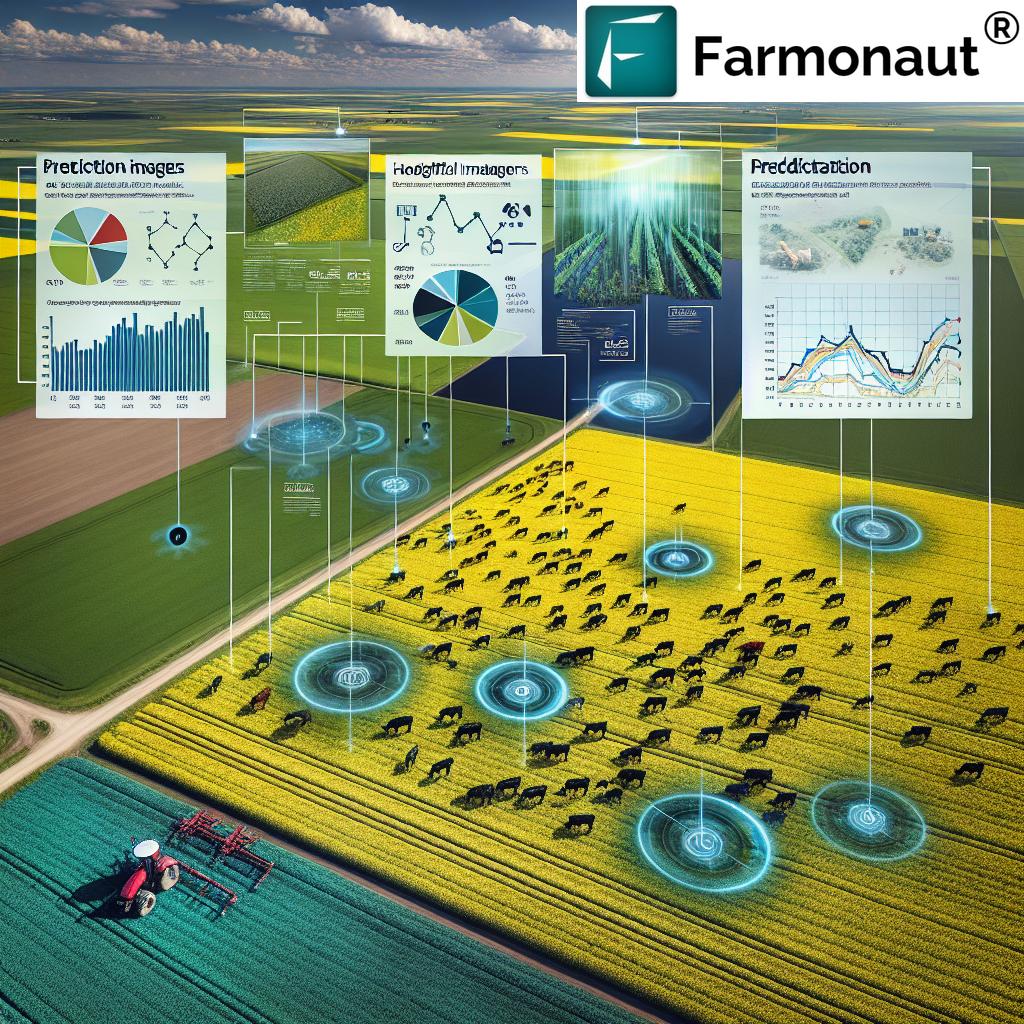
Heifer Retention Strategies: Balancing Current Markets and Future Production
Heifer retention is a critical decision point for cattle producers, balancing short-term market opportunities with long-term herd building. In 2024, we’re seeing interesting trends in heifer retention strategies:
- Reduced Retention Rates: Many producers are opting to sell heifers rather than retain them for breeding, capitalizing on high prices.
- Regional Variations: Retention rates vary significantly between regions, influenced by local market conditions and feed availability.
- Long-term Implications: Lower retention rates could lead to tighter supplies and higher prices in future years.
- Technology-Driven Decisions: Advanced data analytics are helping producers optimize their retention strategies.
For example, in Western Canada, heifer retention rates have dropped to around 18%, down from historical averages of 20-22%. This trend is mirrored in parts of the US, where retention rates have fallen to approximately 15%.
Producers looking to make informed decisions about heifer retention can benefit from tools like Farmonaut’s satellite and weather API, which provides valuable insights into pasture conditions and crop yields, crucial factors in retention decisions.
Global Production Levels and Export Patterns
The global beef market is experiencing significant shifts in production levels and export patterns, with implications for both Canadian and US producers:
- Record Canadian Exports: Canadian beef exports reached a record high of 505,000 tonnes in 2022, valued at $4.16 billion.
- US Export Challenges: Lower production has led to decreased US beef exports, with volumes down approximately 3% year-over-year.
- Emerging Markets: Asian markets, particularly China and South Korea, continue to drive global beef demand.
- Trade Agreements: New and evolving trade agreements are reshaping export opportunities for North American producers.
These global trends highlight the interconnected nature of the beef industry and the importance of staying informed about international market dynamics. Producers can leverage Farmonaut’s Android app to access real-time market data and make informed decisions about production and marketing strategies.
“Canadian beef exports reached a record high of 505,000 tonnes in 2022, valued at $4.16 billion.”
Weather Impacts on Agriculture: Implications for Cattle Production
Weather patterns play a crucial role in shaping agricultural markets, with direct implications for cattle production. In 2024, we’re seeing several weather-related factors influencing the industry:
- Drought Conditions: Persistent drought in key cattle-producing regions has led to reduced pasture availability and increased feed costs.
- Extreme Weather Events: Heatwaves and severe storms have impacted cattle health and productivity in some areas.
- Forage Production: Variable rainfall patterns have affected hay and silage production, influencing feed availability and prices.
- Long-term Climate Trends: Shifting climate patterns are prompting producers to adapt their long-term strategies.
To illustrate the impact of weather on production, let’s consider some recent data:
- In parts of the Western US, drought conditions have reduced pasture productivity by up to 30%.
- Canadian prairies experienced variable rainfall, with some regions seeing 20-30% below average precipitation.
- Heat stress in cattle has led to reduced weight gain and reproductive performance in affected areas.
These weather impacts underscore the importance of accurate forecasting and adaptive management strategies. Producers can utilize Farmonaut’s iOS app to access real-time weather data and satellite imagery, helping them make informed decisions about grazing rotations, feed purchases, and herd management.
Sustainable Farming Practices in Cattle Production
As the agricultural industry faces increasing pressure to reduce its environmental footprint, sustainable farming practices are becoming more critical in cattle production. Here are some key trends and technologies shaping sustainable cattle farming:
- Rotational Grazing: Implementing intensive rotational grazing systems to improve pasture health and soil carbon sequestration.
- Precision Feed Management: Using data-driven approaches to optimize feed efficiency and reduce waste.
- Methane Reduction Strategies: Exploring feed additives and breeding programs to reduce enteric methane emissions.
- Water Conservation: Implementing water-efficient irrigation systems and drought-resistant forage crops.
- Carbon Footprint Tracking: Utilizing technology to measure and manage the carbon footprint of cattle operations.
These sustainable practices not only benefit the environment but can also improve profitability through increased efficiency and potential market premiums for sustainably produced beef. Farmonaut’s precision agriculture technologies can support these efforts by providing detailed insights into crop health, soil moisture, and resource management.
The Role of Technology in Modern Cattle Farming
Technology is playing an increasingly important role in modernizing cattle farming practices. From precision agriculture to advanced data analytics, these tools are helping producers optimize their operations and navigate market challenges:
- Satellite Imagery: Using multispectral satellite data to monitor pasture health and forage availability.
- AI-Powered Analytics: Leveraging artificial intelligence to predict market trends and optimize production decisions.
- IoT Devices: Implementing Internet of Things sensors for real-time monitoring of cattle health and environmental conditions.
- Blockchain Traceability: Utilizing blockchain technology to enhance supply chain transparency and food safety.
- Farm Management Software: Integrating comprehensive software solutions for holistic farm management and record-keeping.
Farmonaut’s suite of technologies, including its web app, mobile applications, and API services, exemplifies how modern tools can be applied to enhance cattle farming operations. By providing access to critical data and insights, these technologies empower producers to make more informed decisions and adapt to changing market conditions.
Looking Ahead: Market Projections and Industry Outlook
As we look towards the future of the cattle industry in Canada and the US, several key trends and projections emerge:
- Continued Tight Supplies: Lower cattle inventories are expected to support higher prices in the short to medium term.
- Increasing Production Costs: Rising input costs, particularly for feed and energy, will challenge producer profitability.
- Evolving Consumer Preferences: Growing demand for sustainably produced and traceable beef may create new market opportunities.
- Technology Adoption: Increased integration of precision agriculture and data analytics tools in cattle operations.
- Global Market Dynamics: Changing trade relationships and emerging markets will influence export opportunities.
These projections highlight the need for producers to stay informed and adaptable in a rapidly changing industry landscape. Utilizing tools like Farmonaut’s precision agriculture platform can provide valuable insights to navigate these challenges and capitalize on emerging opportunities.
Conclusion: Navigating the Future of Cattle Markets
As we’ve explored throughout this analysis, the Canadian and US cattle markets are facing a period of significant change and opportunity in 2024. From shifting production patterns to evolving global demand, producers must navigate a complex landscape of challenges and possibilities.
Key takeaways include:
- The importance of data-driven decision-making in managing herd sizes and retention strategies
- The growing role of technology in optimizing production and enhancing sustainability
- The need for adaptability in the face of weather-related challenges and changing consumer preferences
- The potential for strategic positioning in global markets amidst shifting trade dynamics
By staying informed about market trends, leveraging advanced technologies, and adopting sustainable practices, cattle producers can position themselves for success in this dynamic industry. Farmonaut’s suite of precision agriculture tools offers valuable support in this endeavor, providing the insights needed to make informed decisions in an ever-changing market environment.
As we move forward, the resilience and innovation of the cattle industry will undoubtedly continue to shape the agricultural landscape of North America and beyond.
FAQ Section
Q: What are the main factors influencing cattle prices in 2024?
A: Key factors include reduced cattle inventory, weather impacts on feed production, global demand fluctuations, and changing consumer preferences for beef products.
Q: How is technology changing the cattle farming industry?
A: Technology is revolutionizing cattle farming through precision agriculture, satellite imagery for pasture management, AI-driven analytics for market predictions, and blockchain for supply chain transparency.
Q: What strategies can producers use to manage market volatility?
A: Producers can manage volatility by diversifying their operations, utilizing futures contracts, adopting flexible production strategies, and leveraging data analytics for informed decision-making.
Q: How are sustainable practices impacting the cattle industry?
A: Sustainable practices are becoming increasingly important, with focus areas including rotational grazing, methane reduction, water conservation, and carbon footprint tracking, all of which can improve efficiency and potentially command market premiums.
Q: What role does Farmonaut play in supporting cattle producers?
A: Farmonaut provides precision agriculture technologies that offer valuable insights into crop health, weather patterns, and resource management, helping cattle producers optimize their operations and make data-driven decisions.


